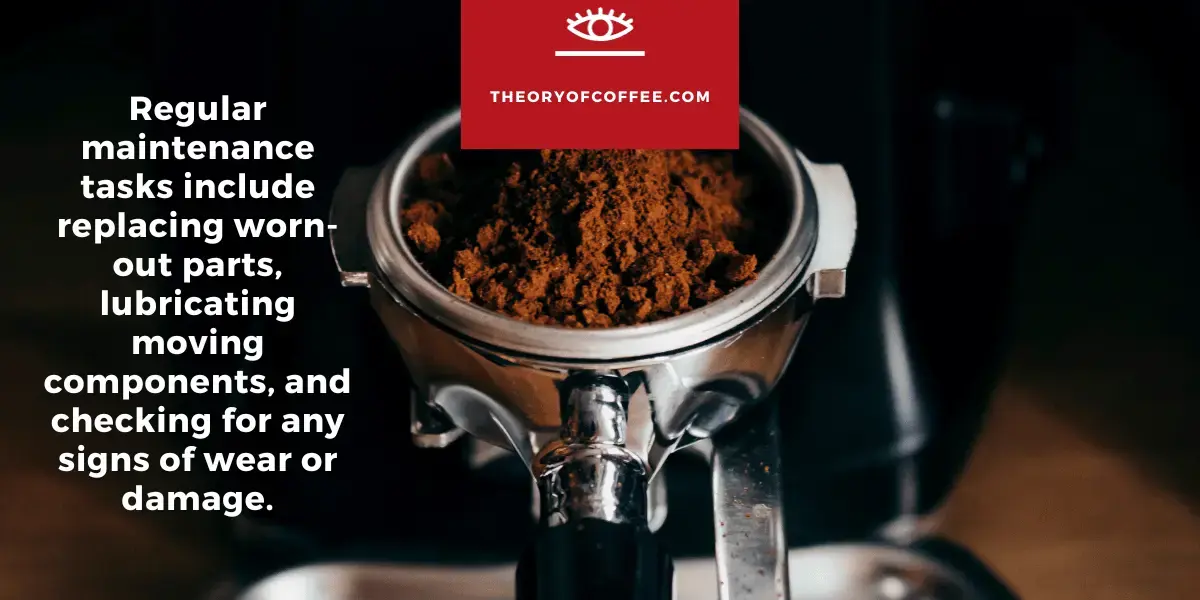The Ultimate Guide to Espresso
Espresso, a concentrated coffee brewing method of Italian origin, has gained immense popularity worldwide. This comprehensive guide will delve into making the perfect espresso, from understanding its characteristics to mastering the brewing process. Whether you’re a seasoned home barista or just beginning your espresso journey, this guide will provide in-depth knowledge and practical tips to enhance your espresso-making skills.
1. Understanding Espresso

Espresso is not just any coffee; its unique characteristics set it apart. Let’s explore what makes espresso so unique.
Description of Espresso
Espresso is a concentrated coffee with a distinctive viscosity akin to warm honey. It features a delightful layer of crema, a creamy foam, on top. This richness is attributed to its higher concentration of suspended and dissolved solids. Additionally, espresso contains more caffeine per unit volume than most other coffee beverages, although its serving size is much smaller.
Espresso is not limited to a specific bean or roast level. You can choose from a wide range of coffee beans and roast degrees to suit your taste preferences. Different beans and roast levels will produce unique flavor profiles, allowing you to explore the diverse world of espresso.
Espresso Roast
Contrary to popular belief, espresso is not tied to a specific bean or roast level. Any coffee bean or roast can be used to make authentic espresso. However, different regions have varying preferences for roast levels. In southern Italy, darker roasts are favored, while northern areas lean towards slightly lighter roasts. The roast level can affect the flavor profile of the espresso, with darker roasts offering bolder and more intense flavors and lighter roasts highlighting the nuances and acidity of the beans.
Etymology and Spelling of Espresso
The term “espresso” derives from “expressing” or squeezing the flavor from coffee using steam pressure. It also conveys the concept of speed, referring to a “fast” or “express” cup of coffee. It is important to note that the correct spelling is “espresso,” while the term “expresso” is generally considered incorrect.
2. How to Make the Perfect Espresso

Brewing espresso is both an art and a science. Let’s explore the step-by-step process of making the perfect cup of espresso.
2.1. Ingredients for Espresso
To create a delightful espresso, start with high-quality coffee beans and ensure the water used is good quality. Let’s dive into the key ingredients for brewing espresso.
- Coffee Beans: Selecting the right coffee beans is crucial for achieving a flavorful espresso. Opt for freshly roasted beans to capture the full spectrum of flavors. Consider exploring single-origin beans or blends to discover different taste profiles and complexities.
- Water Quality: Water makes up a significant portion of your espresso. Using clean, filtered water is essential to avoid unpleasant flavors. The mineral content of the water can also affect the taste of your espresso. Experiment with different water sources to find the ideal balance.
2.2. Brewing Process
Discover the intricate brewing process of espresso, from grinding the beans to tamping and extracting. We’ll delve into each step, highlighting best practices and techniques for optimal extraction and flavor.
- Grinding the Beans: The grind size of the coffee beans plays a crucial role in extraction. A fine grind is typically used to maximize surface area contact with water for espresso. Invest in a good quality burr grinder to achieve consistent results.
- Tamping: Tamping is evenly compacting the coffee grounds in the portafilter before brewing. It ensures an even distribution of water and facilitates proper extraction. Use a tamper to apply consistent pressure and achieve a level surface.
- Extraction: The extraction process involves passing hot water through the compacted coffee grounds—control variables such as water temperature, brew time, and pressure to achieve the desired flavor profile. Aim for a balanced extraction, avoiding over-extraction or under-extraction.
- Brewing Time and Yield: The brewing time and yield can vary based on personal preference and the specific espresso machine. Traditionally, a standard shot of espresso is about 1 ounce (30 ml) with a brewing time of 20-30 seconds. Experiment with different brew times and yields to find your preferred balance of flavors.
2.3 How to Serve and Drink Espresso
Serving and enjoying espresso is an experience in itself. Learn about the ideal serving temperature, proper etiquette, and the art of sipping espresso. We’ll also discuss the addition of sugar or sweeteners and explore the perfect accompaniments, such as biscotti.
- Serving Temperature: Espresso is best served hot but not scalding. The ideal serving temperature ranges between 160°F and 170°F (71°C and 77°C). This temperature allows you to fully appreciate the flavors without burning your tongue.
- Etiquette and Sipping Espresso: Espresso is often enjoyed as a standalone beverage. It is customary to savor it slowly, taking small sips to appreciate the flavors and aromas fully. Avoid gulping it down in one go, as the concentrated nature of espresso is meant to be savored.
- Sugar and Sweeteners: Adding sugar or sweeteners to espresso is a matter of personal preference. Some espresso enthusiasts enjoy the pure flavors of espresso without any additions, while others may prefer a touch of sweetness. Experiment with sweeteners like raw sugar, simple syrup, or flavored syrups to find your desired balance.
- Accompaniments: Biscotti, a type of crunchy Italian cookie, is a popular accompaniment to espresso. Its firm texture complements the rich flavors of espresso. You can also explore options like chocolate, shortbread, or pastries to enhance your espresso experience.
3. Recipes Incorporating Espresso

Espresso serves as the base for various delectable coffee drinks and can be used in baking and cooking. Discover delightful recipes incorporating espresso, from classic drinks like cappuccino and latte to unique creations like espresso brownies and espresso rub for meats.
3.1. Espresso-based Drinks
Explore the world of espresso-based drinks, including cappuccino, latte, Americano, and more. Learn about the ratios of espresso to milk or water, foam variations, and flavorings that can be added to enhance the experience.
- Cappuccino: A classic espresso-based drink, cappuccino combines equal parts espresso, steamed milk, and milk foam. The espresso, milk, and foam layers create a visually appealing beverage with a balanced flavor profile.
- Latte: A latte features more steamed milk and less foam compared to a cappuccino. The result is a smoother and creamier texture, allowing the espresso flavors to shine through. Experiment with latte art to add an artistic touch to your creations.
- Americano: An Americano is a simple yet satisfying coffee beverage. It is made by diluting a shot of espresso with hot water, resulting in a flavor profile similar to drip coffee. Adjust the ratio of espresso to water to achieve your desired strength.
3.2. Baking and Cooking with Espresso
Take your culinary skills to the next level by incorporating espresso into your baking and cooking. Discover how espresso can elevate the flavors of brownies, rubs for meats, and more.
- Espresso Brownies: Adding espresso to brownie batter enhances the richness and complexity of the chocolate flavors. The subtle bitterness of espresso complements the sweetness of the brownies, creating a delightful balance of flavors.
- Espresso Rub for Meats: Create a flavorful espresso rub for meats by combining finely ground espresso beans with spices such as paprika, garlic powder, and black pepper. The espresso adds depth and richness to the rub, creating a unique and delicious flavor profile for your grilled or roasted meats.
4. How to Choose an Espresso Machine

Investing in a quality espresso machine is essential for achieving consistent and delicious espresso at home. Let’s explore the different types of espresso machines and the factors to consider when deciding.
4.1. Types of Espresso Machines
Various types of espresso machines are available, each offering different levels of control and automation. From manual machines that require hands-on operation to super-automatic machines that handle everything for you, we’ll discuss the pros and cons of each type.
- Manual Espresso Machines: Manual espresso or lever machines give you complete control over the brewing process. They require manual pressure application and offer a hands-on and traditional espresso-making experience.
- Semi-automatic Espresso Machines: Semi-automatic machines are a popular choice for home baristas. They control brewing time and extraction, allowing you to fine-tune the process. These machines typically have built-in pumps for consistent pressure.
- Fully Automatic and Super-automatic Espresso Machines: Fully automatic and super-automatic machines take convenience to the next level. They handle everything from grinding the beans to brewing the espresso and frothing the milk. These machines are ideal for those who prioritize simplicity and ease of use.
4.2. Factors to Consider When Buying an Espresso Machine
Choosing a suitable espresso machine can be overwhelming with the many options available. We’ll guide you through essential factors, such as price, size, features, and maintenance requirements, to help you make an informed decision.
- Price: Espresso machines come in a wide price range, from budget-friendly options to high-end models. Determine your budget and consider the features and quality of the machine within that range.
- Size and Space: Consider the space in your kitchen or dedicated coffee area when choosing an espresso machine. Measure the dimensions and ensure the machine fits comfortably in your desired location.
- Features and Customization: Different machines offer various features and customization options. Consider the level of control you desire, such as programmable settings, temperature control, and milk frothing options. Having the ability to customize your espresso experience can significantly enhance your brewing journey.
- Maintenance and Cleaning: Regular maintenance and cleaning are necessary for keeping your espresso machine in optimal condition. Some machines require more frequent cleaning and maintenance than others. Consider the ease of cleaning and the availability of replacement parts when deciding.
5. How to Maintain and Clean Your Espresso Machine

Proper maintenance and cleaning are crucial for keeping your espresso machine in optimal condition and ensuring the longevity of its performance. Let’s explore the essential daily cleaning routine and deep cleaning procedures to maintain the cleanliness and functionality of your machine.
5.1. Daily Cleaning Routine
Discover the steps involved in the daily cleaning routine, including purging and wiping the steam wand, cleaning the portafilter, and maintaining the group head. These simple tasks will help prevent coffee residue buildup and ensure the quality of your espresso.
- Purging and Wiping the Steam Wand: After frothing milk, it is essential to purge the steam wand to remove any residual milk. Wipe the wand with a damp cloth to ensure it remains clean and free from any milk residue.
- Cleaning the Portafilter: Remove the used coffee grounds from the portafilter after each shot. Rinse the portafilter and basket under running water to remove any remaining coffee particles. Regularly clean the portafilter with a mild detergent to prevent buildup.
- Maintaining the Group Head: The group head is where the portafilter attaches to the espresso machine. Wipe the group head with a clean cloth to remove any coffee residue. Periodically, backflush the group head with a cleaning solution to remove oils and debris that may accumulate over time.
5.2. Deep Cleaning and Maintenance
Periodically, your espresso machine requires more thorough cleaning to remove stubborn residues and ensure optimal performance. We’ll discuss deep cleaning techniques, descaling procedures, and regular maintenance tasks to keep your machine in shape.
- Deep Cleaning Techniques: Deep cleaning involves removing parts of the espresso machine for a thorough cleaning. This may include disassembling the portafilter, steam wand, and shower screen. Follow the manufacturer’s instructions for deep cleaning to ensure proper reassembly and prevent damage to the machine.
- Descaling: Over time, mineral deposits from water can build up inside the espresso machine, affecting its performance. Descaling is the process of removing these mineral deposits. Use a descaling solution recommended by the manufacturer and follow the instructions carefully.
- Regular Maintenance: Regular maintenance tasks include replacing worn-out parts, lubricating moving components, and checking for any signs of wear or damage. Consult the machine’s manual for specific maintenance guidelines and refer to reputable sources for troubleshooting common issues.
6. How to Make Espresso at Home: A Starter Guide

This section is for you if you’re new to making espresso at home. We’ll provide a comprehensive starter guide covering everything from selecting the proper coffee to pulling a perfect shot of espresso. Let’s dive in!
- Selecting Your Coffee: Understanding the importance of using high-quality coffee beans and exploring different options of single-origin beans or blends will enhance your espresso experience. Consider roast level, flavor profiles, and sourcing when selecting coffee beans for home brewing.
- Grinding and Measuring Your Coffee: The right grind size and precise coffee dosage are critical for extracting flavors properly. Invest in a burr grinder to ensure consistency and adjust the grind size based on your espresso machine’s recommendations. Use a scale to measure the coffee accurately for consistent results.
- Pulling a Good Shot: Mastering the art of pulling a shot of
espresso involves precise techniques, including tamping, water temperature, and extraction time. Consistency
is critical to achieving optimal extraction and flavor. Experiment with different variables and note the
results to refine your brewing process:
3.1. Tamping Technique: Apply consistent pressure when tamping the coffee grounds. Use a tamper that fits the size of your portafilter to ensure even extraction. Experiment with different tamping pressures to find the right balance for your espresso;
3.2. Water Temperature and Preheating: Water temperature is crucial in extracting the flavors from the coffee grounds. Ensure that your espresso machine reaches the appropriate brewing temperature before pulling a shot. Preheating the engine and portafilter can help maintain temperature stability throughout brewing.
3.3. Extraction Time: The duration of the extraction is another crucial variable to consider. Aim for a total extraction time of around 25-30 seconds, from when you start the shot until it finishes. Adjust the grind size, tamping pressure, and water volume to achieve the desired extraction time. - Cleaning and Maintenance: Proper cleaning and maintenance are essential for keeping your espresso machine in optimal condition. Follow the manufacturer’s instructions for regular cleaning, backflushing, and descaling. Regularly check and clean the shower screen, group head gasket, and other components to prevent any buildup that may affect the flavor of your espresso.
- Frothing Milk: Learn how to steam and froth milk to create the velvety texture required for lattes, cappuccins, and other espresso-based drinks. Use a stainless steel frothing pitcher and position the steam wand at the right angle to achieve the desired results. Practice a steady and controlled motion to create microfoam for latte art or a creamy cappuccino texture.
- Continuous Learning and Improvement: Embarking on making espresso at home opens up a world of possibilities. There is always room for improvement and further exploration. Attend barista classes, participate in online coffee communities, and experiment with different brewing techniques and recipes to enhance your skills and knowledge. Remember, making espresso is a continual learning process, and with practice, you’ll master the art of brewing your perfect cup.
7. How to Make Espresso with Instant Coffee
While making true espresso with instant coffee is not possible since espresso is a highly concentrated coffee brewed under pressure using finely ground coffee beans, you can create a strong and rich coffee similar to espresso using instant coffee. Here's a method for making a coffee that has some of the characteristics of espresso:
7.1. Ingredients and Tools
- Instant coffee granules
- Hot water (just off boiling)
- A microwave-safe glass or cup
- A spoon or whisk
- A coffee cup or mug
7.2. Instructions
- Measure the Instant Coffee: Start by measuring the desired amount of instant coffee granules. For an espresso-like strength, you'll want to use a relatively high coffee-to-water ratio. Start with about 2 to 3 teaspoons of instant coffee per cup. Adjust to your preference for strength.
- Heat the Water: Heat the water to just below boiling. You can do this by heating water in a kettle or in the microwave. Aim for a temperature between 195°F to 205°F (90°C to 96°C), which is typical for brewing coffee.
- Mix the Instant Coffee: Place the instant coffee granules in a coffee cup or mug.
- Add a Small Amount of Hot Water: Pour a small amount of hot water (about 1 to 2 ounces or 30 to 60 ml) over the instant coffee. This will create a concentrated coffee paste.
- Stir or Whisk: Use a spoon or whisk to vigorously stir the coffee paste. This helps dissolve the instant coffee granules and creates a creamy consistency similar to espresso.
- Add More Hot Water: After mixing the coffee paste, slowly add more hot water to the cup while stirring. Continue to add water until the cup is filled to your desired strength and volume. For an espresso-like experience, aim for a smaller volume, around 1 to 2 ounces (30 to 60 ml).
- Optional Additions: If desired, you can add sugar, sweeteners, cream, or milk to taste. Stir to combine.
- Serve: Your instant coffee "espresso" is now ready to be enjoyed. Sip it slowly to savor its rich flavor.
Keep in mind that while this method can create a strong coffee reminiscent of espresso, it won't replicate the true espresso experience due to the differences in brewing methods. However, it's a quick and convenient way to enjoy a strong and flavorful coffee at home using instant coffee granules. Adjust the coffee-to-water ratio to match your preferred strength and taste.
8. Common Espresso Mistakes and How to Avoid Them

Even experienced baristas make mistakes when brewing espresso. Let’s explore some common pitfalls and how to avoid them to ensure you consistently produce excellent espresso at home.
- Over-extraction and under-extraction: Understanding the balance between over- and under-extraction is crucial for achieving the perfect espresso shot. Over-extraction can produce a bitter, overbearing taste, while under-extraction leads to a weak and sour flavor. Adjust your brewing variables, such as grind size, tamping pressure, and extraction time, to achieve a balanced extraction.
- Using stale beans: The freshness of coffee beans significantly impacts the quality of your espresso. Using stale beans can result in a flat and dull-tasting espresso. Always opt for freshly roasted beans and store them properly to maintain their flavor and aroma.
- Incorrect tamping: Tamping is a critical step in the brewing process, affecting the extraction and flavor of your espresso. Inconsistent tamping pressure or uneven distribution of coffee grounds can lead to channeling, where water bypasses the coffee bed, resulting in an uneven extraction. Practice tamping with consistent pressure and ensure an even surface for uniform extraction.
9. FAQs
Q: How many grams of coffee for Espresso?
A: The ideal amount of coffee for making a standard single espresso shot is typically around 7 to 9 grams of coffee grounds. This amount of coffee is finely ground and tightly packed into the espresso machine's portafilter. For a double espresso shot, you would typically use approximately 14 to 18 grams of coffee grounds.
Q: How many Espresso beans equal a cup of coffee?
A: The number of espresso beans needed to make a cup of coffee is not a straightforward conversion, as it depends on various factors, including the type of coffee beans, the roast level, the brewing method, and personal taste preferences. For a more traditional 8-ounce (240 ml) cup of coffee, you might need to use a significantly larger amount of coffee beans, typically around 15 to 20 grams of coffee grounds. Again, the exact amount can vary based on factors like brewing method and personal taste.
Q: What kind of coffee does Starbucks use for Espresso?
A: Starbucks uses its signature coffee blend called "Espresso Roast" for its espresso-based beverages. Espresso Roast is a custom coffee blend created by Starbucks, specifically designed for making espresso. It is known for its bold and rich flavor profile, making it a fundamental component of many Starbucks espresso drinks. The specific components and proportions of the Espresso Roast blend are a closely guarded trade secret. However, Starbucks typically uses a combination of high-quality Arabica coffee beans sourced from various regions around the world to create their unique flavor profile. Keep in mind that the exact coffee offerings at Starbucks may vary by location and region, so you may encounter different espresso options when visiting different Starbucks stores.
Q: Where to buy Espresso coffee beans?
A: You can buy espresso coffee beans from a variety of sources, both online and in physical stores. Here are some common places to purchase espresso coffee beans: Local coffee roasters, coffee shops and cafés, grocery stores, online retailers, coffee subscription services, specialty coffee websites, local farmers' markets, wholesale clubs, and coffee equipment stores.
Q: What is the best coffee bean for Espresso?
A: The "best" coffee bean for espresso can vary greatly depending on personal taste preferences, the equipment used, and desired flavors. However, here are some common characteristics and types of coffee beans that are often considered excellent choices for espresso: Espresso blends, single-origin espresso, dark roast, medium roast, freshness, Arabica, Robusta, and grind consistency. Ultimately, the best coffee bean for espresso is a matter of personal preference. It's recommended to explore different beans, blends, and roast levels to discover the flavors that you enjoy most in your espresso. Additionally, investing in high-quality, freshly roasted beans and maintaining your espresso machine properly will contribute to a great espresso experience.
Q: What is the best Espresso and coffee machine?
A: Determining the "best" espresso and coffee machine can be subjective and depends on your specific needs and preferences. There are many excellent options available on the market, and the choice often comes down to factors like budget, space, desired features, and the type of beverages you want to prepare. Here are some top-rated espresso and coffee machine options to consider: Breville Barista Express, Gaggia Classic Pro, Nespresso Creatista Plus, Jura E8, De'Longhi Magnifica ESAM3300, La Marzocco Linea Mini, Keurig K-Café, Rancilio Silvia, Sage by Heston Blumenthal Dual Boiler, and Lavazza Blue LB 300. When choosing an espresso and coffee machine, consider your budget, the space available in your kitchen, your skill level, and the types of beverages you enjoy making. It's also a good idea to read reviews, visit showrooms if possible, and try out different machines to find the one that best suits your needs and preferences.
10. Conclusion

Congratulations! You’ve now gained a comprehensive understanding of espresso, from its history and characteristics to the brewing process and common mistakes to avoid. Armed with this knowledge, you can confidently embark on your espresso-making journey and explore the endless possibilities of this beloved coffee beverage. Practice and experimentation are essential to refining your skills and finding your espresso preference.